10 Things That Frighten Cats & 9 Tricks To Instantly Calm Them
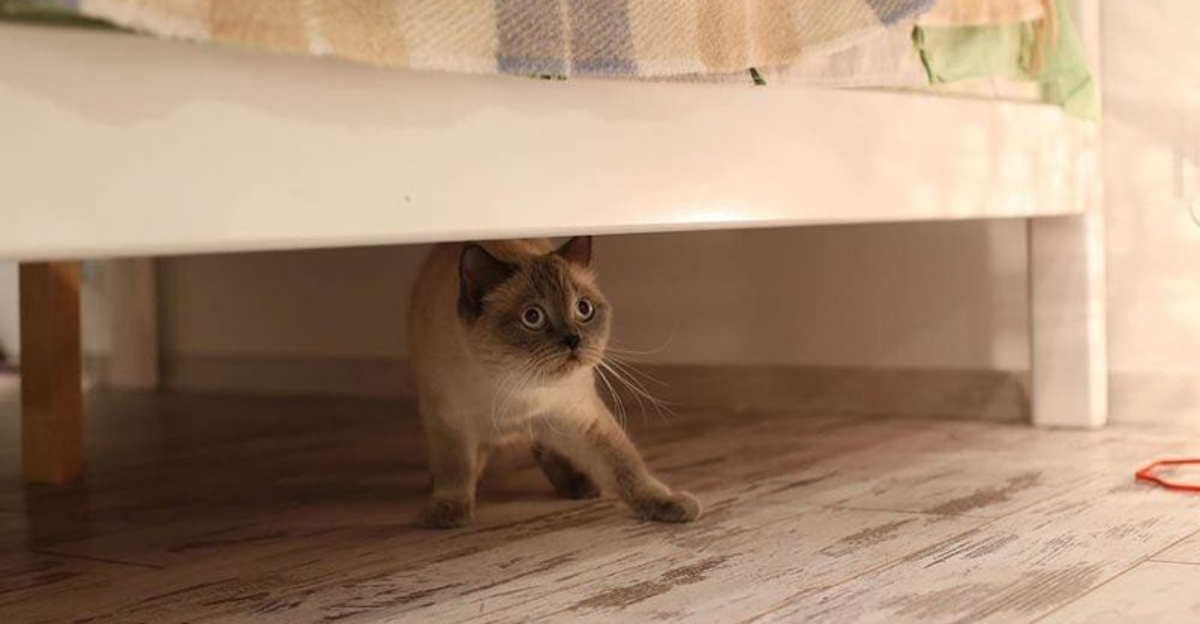
Cats are known for their independent and curious nature, but there are certain things that can easily frighten them. From loud noises to sudden movements, these triggers can cause stress and anxiety in our feline friends.
Understanding what scares your cat is the first step in keeping them calm and comfortable. We’ll talk about 10 common things that frighten cats and share 9 effective tricks to instantly calm them, ensuring a peaceful and happy environment for your pet.
1. The Dreaded Vacuum

Ever seen a cat dart like a rocket at the mere sound of a vacuum? That noisy contraption is their arch-nemesis. The roar and vibrations can be overwhelming for their sensitive ears.
To help them cope, try running the vacuum cleaner when they’re in another room. Gradually introduce them to the noise in small doses, rewarding them with treats to create positive associations.
2. Thunderstorms
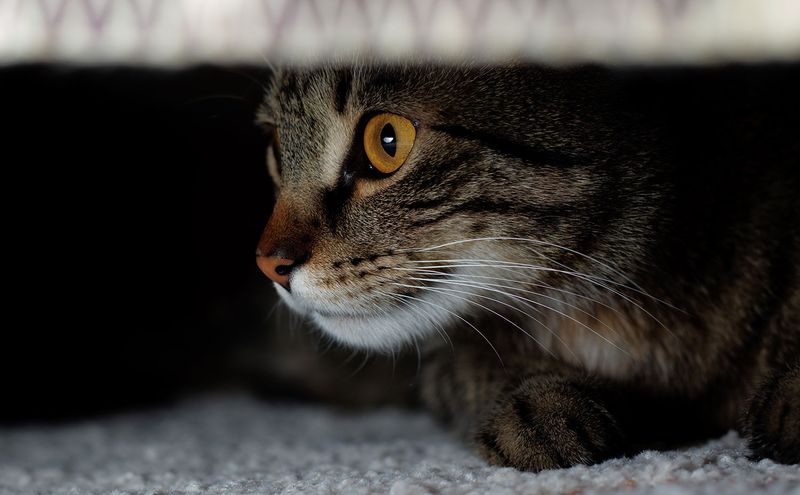
When thunder rumbles in the distance, many cats seek refuge under the bed. The loud booms and bright flashes can be terrifying for them.
Creating a safe, quiet space can help, like a cozy corner with blankets. Playing soothing music or using a white noise machine might mask the storm’s intensity, helping your cat remain calm.
3. Strangers In The House

New faces can be intimidating for cats who cherish their routines. Strangers bring unfamiliar scents and sounds, which can be unsettling.
Allow your cat to approach new people at their own pace. Offer treats to guests to gently entice your cat, building a bridge of trust. Over time, your feline friend will gain confidence.
4. Trips To The Vet

The vet’s office, with its strange smells and other animals, can be a battlefield of stress for cats. The journey itself, encaged and away from familiar surroundings, adds to their anxiety.
Acclimate your cat to the carrier at home by leaving it open with a soft blanket inside. Short practice trips in the car can also help diminish their fear.
5. Loud Noises

Cats’ sharp hearing makes them sensitive to sudden loud noises. Fireworks, sirens, or even a clattering dish can make them jump out of their skin.
Creating a peaceful environment is key. Offering a quiet retreat and engaging them with interactive toys can distract and comfort your cat during noisy moments.
6. Other Animals

New or unfamiliar animals can make cats feel threatened, especially if they haven’t been socialized. Their territory feels invaded, sparking fear and defensiveness.
Introduce new pets gradually, keeping initial interactions brief and supervised. Reward calm behavior in both animals to promote harmony. Time and patience will turn foes into friends.
7. Being Left Alone
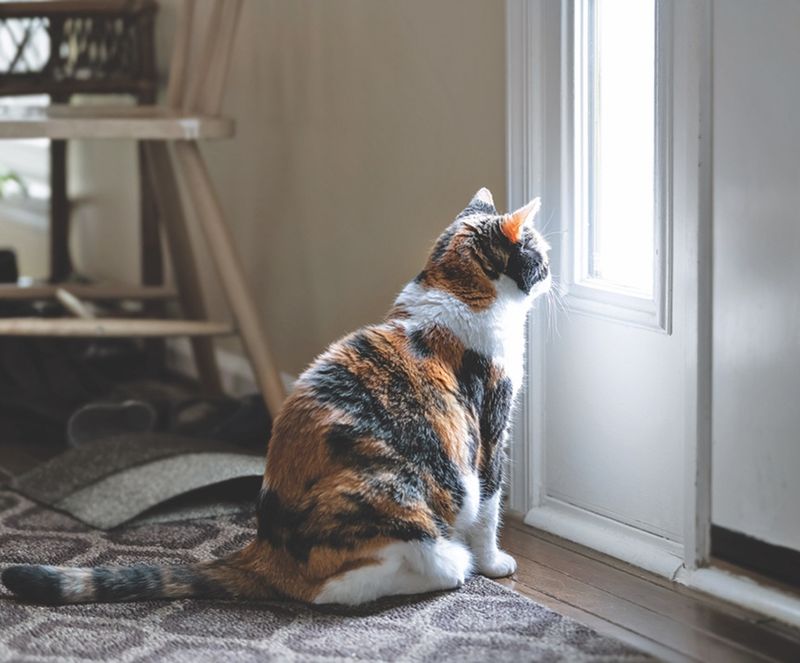
Some cats are more social than others and can feel anxious when left alone. The silence and solitude can be overwhelming for these sensitive souls.
Leaving behind interactive toys or puzzle feeders can keep them occupied. Consider adopting a second pet for companionship if your cat shows signs of loneliness.
8. Unfamiliar Scents

Cats have a highly developed sense of smell, and new scents can be unsettling. Whether it’s a new piece of furniture or a visitor’s perfume, unfamiliar odors can trigger their anxiety.
Introduce new scents slowly. Let them explore at their own pace, and soon enough, they’ll adjust, realizing there’s no threat.
9. The Looming Shadow

The sudden appearance of a large, looming shadow can send your cat into a frenzy. This unfamiliar silhouette, especially if it moves rapidly, triggers a primal fear. Historically, shadows could signal predators, and that deep-rooted instinct persists today.
Cats are natural hunters; their instinct is to hide or flee when faced with sudden changes in their environment. Often, the shadow isn’t a threat, but the cat’s response is immediate and intense.
Creating a consistent environment with minimal disruptions can help alleviate this kind of fear, allowing your cat to feel safe and secure.
10. The Enigmatic Ceiling Fan
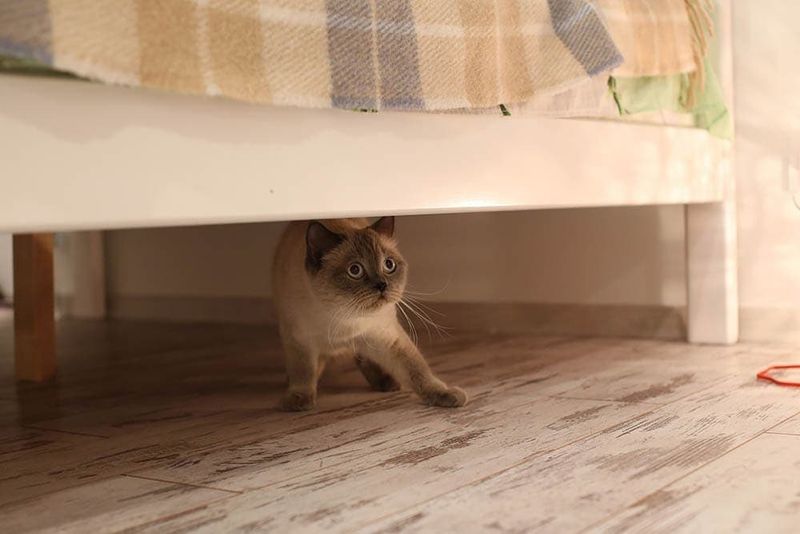
Ceiling fans, while ordinary to us, are mysterious and unnerving to cats. The constant rotation and noise create an uneasy atmosphere, especially if the cat cannot understand the source.
To a cat, the fan might appear as a hovering predator, causing anxiety and stress. This misinterpretation stems from their acute survival instincts, always on the lookout for danger.
Introducing your cat to the fan slowly, perhaps with the fan off initially, and providing cozy spots away from its direct path can gradually reduce fear and help them adjust to its presence.
11. Soft Music

Playing soft, calming music can create a serene environment for your cat. The gentle melodies can drown out stress-inducing noises and create a peaceful atmosphere.
Experiment with different genres to see what your cat prefers. You might find them more relaxed with classical or nature sounds.
12. Comforting Pheromones

Pheromone diffusers can mimic the natural comforting scents cats use to mark territory. They can help reduce anxiety related to changes in the environment.
Place a diffuser in areas where your cat spends time, especially during stressful events like moving or introducing a new pet.
13. Gentle Massage
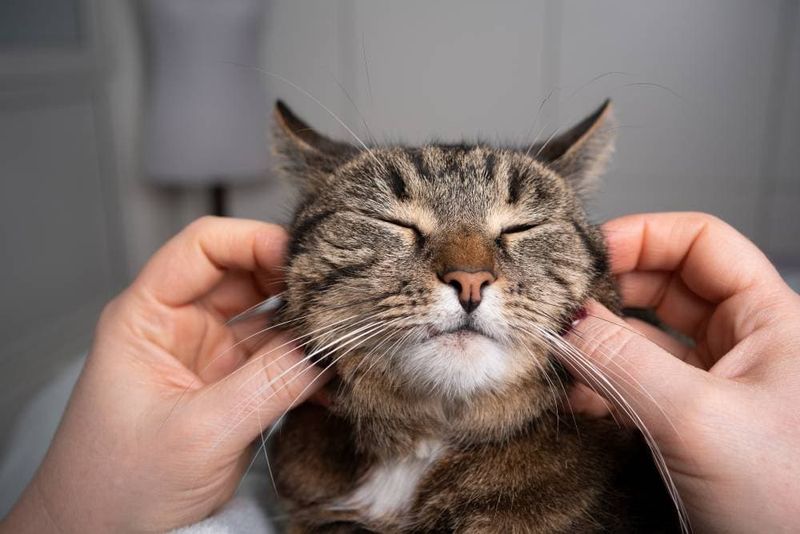
Cats often enjoy gentle massages, which can be soothing and help ease tension. Massaging their favorite spots, like behind the ears or along the back, can boost their mood.
Always be attentive to their reactions. If they seem to enjoy it, make it a regular part of your bonding routine.
14. Interactive Play
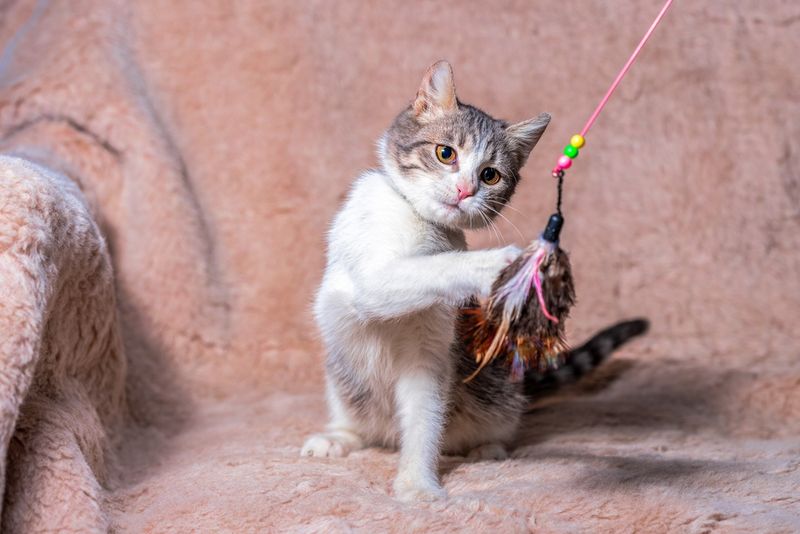
Engaging your cat in interactive play can be a great stress reliever. Toys that mimic prey, like feather wands or laser pointers, can distract and delight them.
Playtime is also an excellent way to burn off excess energy, leading to a more relaxed and content cat.
15. A Cozy Hideout

Providing a cozy hideout can give your cat a sense of security. Whether it’s a box, a covered bed, or a nook, having a space to retreat can help them feel safe.
Allow them to use it when they feel overwhelmed or just need some quiet time.
16. Routine And Familiarity

Cats thrive on routine, and changes can be unsettling. Sticking to a regular feeding and playtime schedule gives them a sense of predictability.
If change is unavoidable, try to introduce it gradually, allowing time for adjustment.
17. Positive Reinforcement
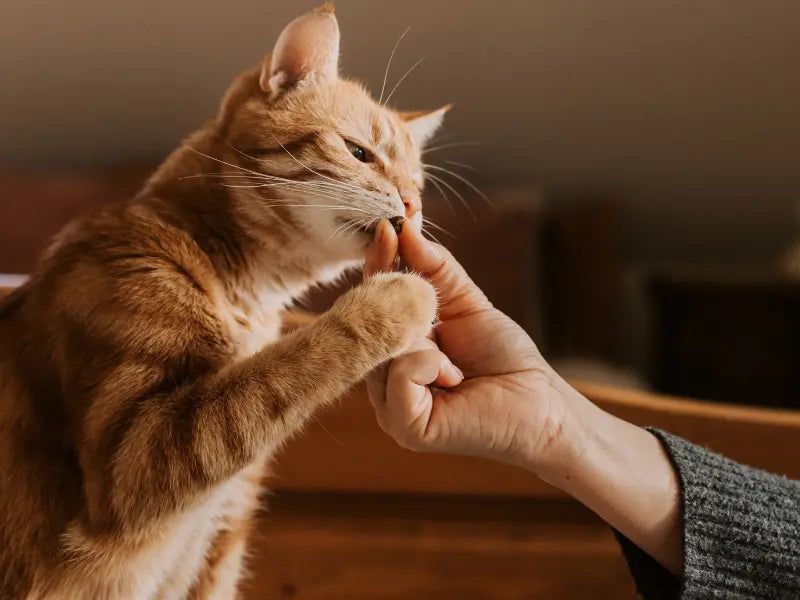
Using positive reinforcement can help ease fears. Rewarding calm behavior with treats or affection encourages your cat to associate their environment with positive feelings.
Be patient. Consistent reinforcement can gradually change their response to stressors.
18. Time And Patience
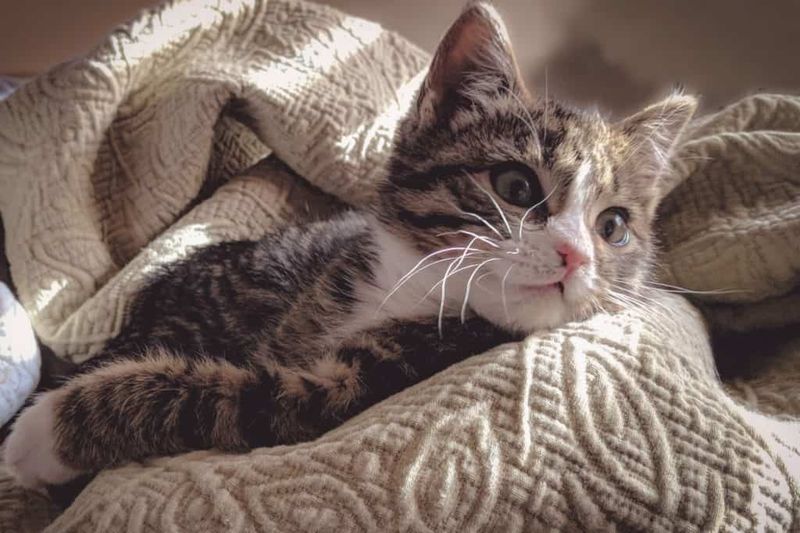
Time and patience are the most effective ways to help your cat overcome fear. Building trust requires gentle and consistent interactions.
Allow your cat to approach you on their terms, and never force interactions. A loving environment will ease their worries.
19. The Magic Of Cat TV
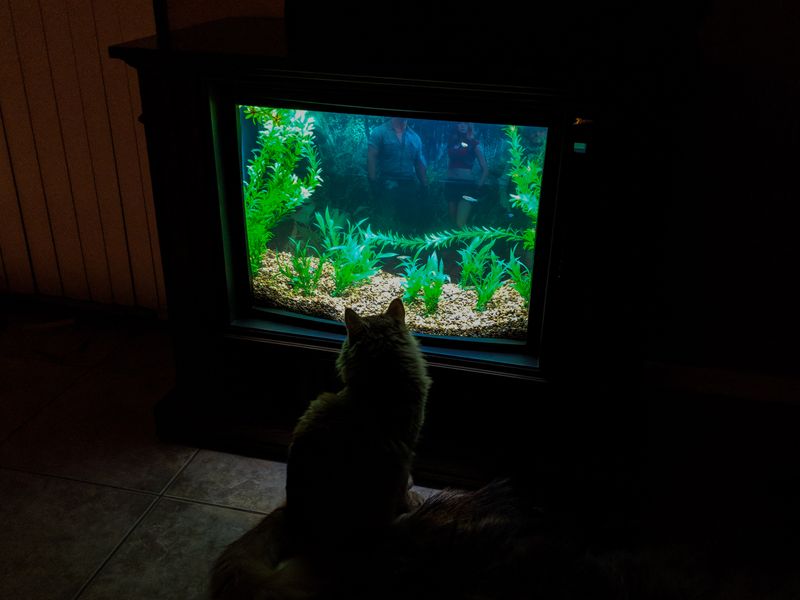
Cats love stimulation, and a dedicated ‘cat TV’ can be a wonderful way to calm them. With videos of birds, fish, or small animals, these programs engage your cat’s attention and provide entertainment.
The gentle movement and sounds can be incredibly soothing, redirecting their focus from stressors to something enjoyable. It’s an interactive experience that mimics hunting, satisfying their natural instincts.
Regularly allowing your cat to watch these videos, especially in a safe, peaceful area, can be a great way to reduce anxiety and promote relaxation.






